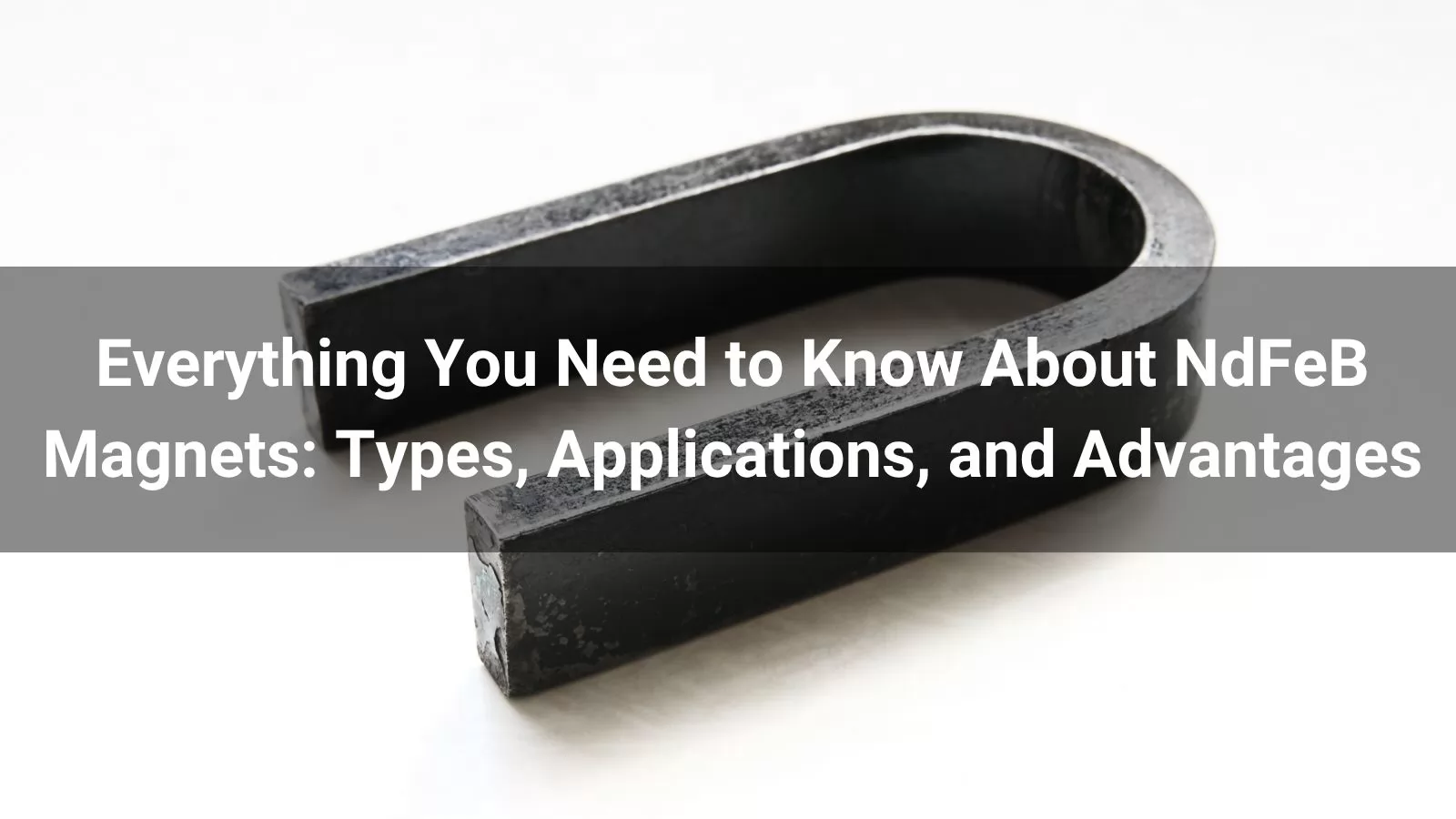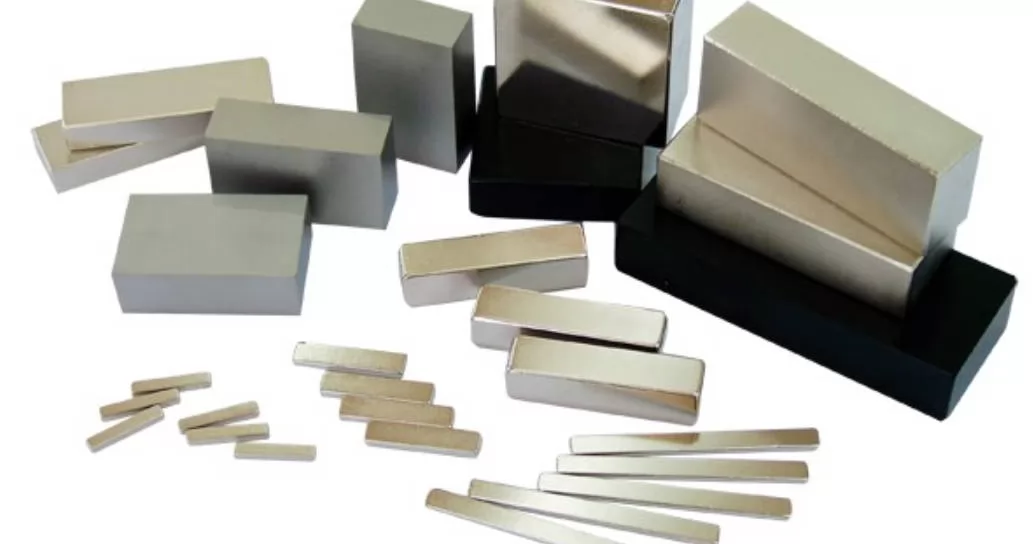Everything You Need to Know About NdFeB Magnets: Types, Applications, and Advantages

NdFeB magnets, also known as Neodymium Iron Boron magnets, Neo magnets, NIB magnets, or simply rare earth magnets, are the strongest type of permanent magnets available today. Made primarily of neodymium (Nd), iron (Fe), and boron (B), these magnets offer superior magnetic performance, high energy density, and compact size—making them indispensable in modern technology.
From electric vehicles to smartphones, NdFeB magnets power many of the devices and systems we use every day. In this in-depth guide, we’ll walk you through everything you need to know about these powerful magnets: their properties, types, coatings, applications, and how to choose the right one.
Contents
- What Are Neodymium Magnets?
- Types of NdFeB Magnets
- Magnetic Grades and Temperature Ratings
- Key Features of NdFeB Magnets
- Common Applications
- Shapes and Customization Options (Expanded with new keywords)
- How to Select the Right NdFeB Magnet
- Future Trends
- Conclusion
1. What Are Neodymium Magnets?
Neodymium magnets are a type of rare earth magnet known for their extremely high magnetic strength. Discovered in the 1980s, they have quickly become the go-to solution for high-performance applications.
Why Are They So Strong?
They exhibit the highest magnetic energy product (BHmax) among all commercially available magnets. This means they can produce powerful magnetic fields even in small sizes.
Common Names:
- NdFeB Magnets
- Neo Magnets
- NIB Magnets
- Rare Earth Magnets
- Neodym Magnete (German term)
Fun Fact: Despite the term "rare earth," neodymium is relatively abundant but requires complex extraction and processing.
2. Types of NdFeB Magnets
NdFeB magnets are manufactured using different techniques based on application needs.
Sintered NdFeB Magnets
- Production: Powder metallurgy
- Strength: Highest magnetic force (up to 1.45T)
- Use: Motors, wind turbines, generators
- Note: Brittle; requires surface coating
Bonded NdFeB Magnets
- Production: Mixing magnetic powder with plastic or resin
- Strength: Lower than sintered, but more flexible
- Use: Hard drives, sensors, consumer electronics
- Advantages: Complex shapes, isotropic magnetism
Hot-Pressed NdFeB Magnets
- Production: Rapid hot pressing without heavy rare earths
- Use: Automotive electric power steering (EPS)
- Note: Limited shapes, higher cost
3. Magnetic Grades and Temperature Ratings
NdFeB magnets are graded based on their maximum energy product (MGOe) and temperature tolerance.
| Grade | Max Energy Product (MGOe) | Max Temp (°C) |
|---|---|---|
| N35 | 35 | 80 |
| N42 | 42 | 80 |
| N52 | 52 | 80 |
| N35SH | 35 | 150 |
| N35EH | 35 | 200 |
Suffixes Explained:
- M = 100°C
- H = 120°C
- SH = 150°C
- UH = 180°C
- EH = 200°C
- AH = 220–230°C
Temperature Effects:
Magnet strength increases in cold environments (as low as -130°C) but decreases with heat. Permanent demagnetization can occur if the maximum rated temperature is exceeded.
4. Key Features of NdFeB Magnets

Advantages
- High Magnetic Strength in compact sizes
- Wide Temperature Range, including cryogenic conditions
- Customizable Shapes and Coatings
- High Coercivity, resistant to demagnetization
- Cost-Effective, especially compared to SmCo
Disadvantages
- Corrosion Prone: Needs protective coatings like NiCuNi, epoxy, zinc
- Brittle: Can chip or break under mechanical stress
- High-Temperature Grades Are Expensive
- Price Volatility: Neodymium and dysprosium prices can fluctuate
5. Common Applications
- Automotive & Green Energy (EV motors, wind turbines, EPS)
- Consumer Electronics (smartphones, earbuds, HDDs, wireless chargers)
- Medical Devices (MRI systems, surgical instruments)
- Industrial Equipment (magnetic separators, sensors, robotics)
6. Shapes and Customization Options (Expanded with New Keywords)
NdFeB magnets come in a wide variety of shapes and finishes to suit diverse applications:
- Block Magnets (Neodymium Block Magnets) – Used in industrial machinery and magnetic holders.
- Ring Magnets (Neodymium Ring Magnets) – Common in motors, speakers, and magnetic sensors.
- Cylinder Magnets (Neodymium Cylinder Magnets) – Ideal for cylindrical mounting and magnetic coupling.
- Disc Magnets (Neodymium Disc Magnets) – Compact and widely used in electronics and crafting.
- Arc & Sector Magnets (Neodymium Arc Magnets, Neodymium Sector Magnets) – Essential for motor and generator designs.
- Small Magnets (Neodymium Small Magnets) – Perfect for precision applications like jewelry clasps and mini motors.
- Rectangle Magnets (Neodymium Rectangle Magnets) – Used in magnetic holders and industrial fixtures.
- Rhombic Magnets (Neodymium Rhombic Magnets) – Specialized shapes for unique magnetic field requirements.
- Adhesive Backed Magnets (Adhesive Backed Magnets) – Convenient for easy mounting on surfaces.
Coating Options: Nickel (Ni), Zinc (Zn), Epoxy, Gold, Silver, Color Zinc, and more.
7. How to Select the Right NdFeB Magnet
When choosing a neodymium magnet, consider:
- Application Needs: Pull force, shape, and size requirements.
- Operating Environment: Heat, moisture, or chemical exposure.
- Magnet Grade: Higher grades = higher strength.
- Magnetization Direction: Axial or radial.
- Protective Coating: Essential for humid or corrosive conditions.
Tip: For long-term durability, always choose magnets with appropriate coatings or corrosion-resistant grades.
8. Future Trends
As industries transition toward sustainability and miniaturization, NdFeB magnets will remain critical. Future innovations include:
- Rare-Earth Recycling Technologies
- Heavy Rare Earth-Free Magnet Development
- Higher Temperature Resistance
- Magnet Miniaturization for IoT Devices (e.g., Vaanet applications)
Demand will grow in electric vehicles, wind energy, robotics, and space technology.
9. Conclusion
Neodymium magnets are a cornerstone of modern technology due to their unmatched strength, design versatility, and cost-efficiency. Whether powering an electric motor or enhancing data storage devices, these magnets help build the future of innovation.
Choosing the right NdFeB magnet depends on understanding its properties, environment, and functional requirements. With the right guidance and reliable suppliers, businesses can fully leverage the power of rare earth magnets.
Read more:
Top 10 Magnet Manufacturers in Europe 2025

